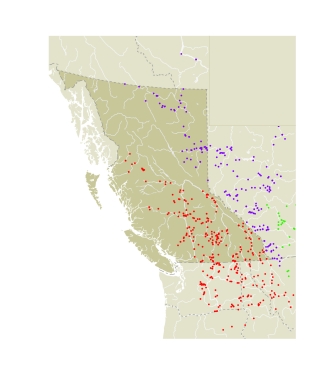AdultSimilar to the Tawny Crescent, as discussed under that species. There has been extreme confusion in the literature as to the correct species name for this species and whether it is one or two species. Most of the arguments for two species emphasize that the southern forms are multivoltine and the northern ones univoltine. East of the Continental Divide there appear to be corresponding wing pattern differences. In BC the southern, multivoltine populations are more similar to the eastern univoltine populations. A recent paper by Porter and Mueller (1998) shows that the two behave as one species and suggests that the conservative approach of recognizing one species be adapted. For this book we take that approach but realize that the question is far from resolved. No matter what the outcome, no one has ever suggested that BC populations represent more than one species.
Immature StagesThe eggs are pale green and are laid in a cluster on the larval foodplant (Bird et al. 1995). The larva is chocolate brown with cream markings. The pupae are cream with brown streaks.
SubspeciesThe northern subspecies, the Northern Pearl Crescent, P.t. cocyta (Cramer, [1777]) (TL: Cape Breton, NS), occurs in northern BC. In the south the Pasco Crescent, P.t. pascoensis Wright, 1905 (TL: Pasco, WA) is found. The subspecies are weakly differentiated.
